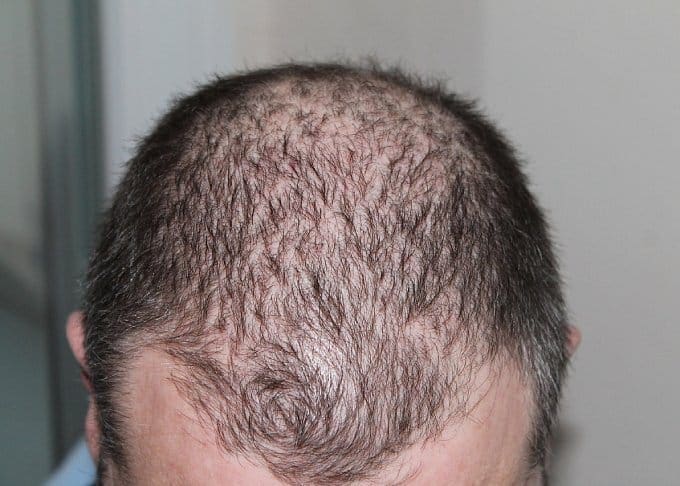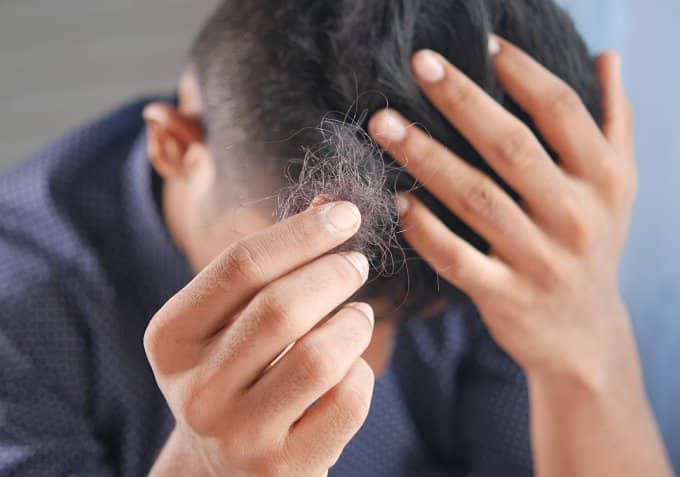words Al Woods

Hair loss is an issue that affects many men around the world. It can range from minor, temporary thinning to complete baldness and cause great distress. While there is no surefire way to prevent hair loss, various treatments are designed to help slow it down. This article will give you a comprehensive look at the causes of male pattern baldness and explore some possible treatments.
Causes of Male Pattern Baldness
Male pattern baldness (MPB) is caused by genetic factors, primarily in the form of the hormone dihydrotestosterone (DHT). This hormone binds to hair follicles on the scalp, causing them to shrink over time and produce weaker, thinner hairs. As a result, MPB usually manifests as a receding hairline or bald spots on top of the head – although it can vary from person to person. Other factors like stress, diet, medical conditions, and certain medications may also play a role in the development of MPB.
Treatments for Male Pattern Baldness
Since male pattern baldness is primarily caused by genetic factors that cannot be controlled or changed, treatments mainly focus on slowing its progression rather than stopping it completely. Some possible treatments include the following:
Scalp Micropigmentation
When it comes to possible treatments for men’s hair loss, scalp micropigmentation (SMP) is an excellent option. SMP, otherwise known as a “hair tattoo”, is an increasingly popular technique that has proven to be a safe and effective solution for male pattern baldness. Unlike conventional treatments such as medications or surgery, scalp micropigmentation (hair tattoo) does not require invasive procedures and can be completed within one treatment session. The process involves using tiny needles and pigments to add tiny dots of color to the scalp in order to create the appearance of thicker, fuller hair. This creates a natural-looking scalp with the illusion of thicker hair follicles.
Finasteride/Propecia
Finasteride/Propecia is a powerful medication that effectively treats male pattern baldness (MPB) and other forms of hair loss in men. The active ingredient, finasteride, blocks the production of an enzyme called 5-alpha reductase, which converts testosterone into dihydrotestosterone (DHT). DHT is one of the primary causes of hair loss in men. By blocking its production, finasteride helps to slow down and even stop further hair loss. While it does not necessarily promote new hair growth, it can help maintain and thicken existing hair.
Minoxidil/Rogaine
When treating hair loss, Minoxidil/Rogaine is the most widely-used and highly recommended product for men seeking an effective treatment option. It has been clinically proven to slow down and even stop hair loss in some cases. In addition, it can also stimulate new hair growth. This over-the-counter topical solution increases blood flow to the scalp and promotes thicker hair growth.
Minoxidil/Rogaine is easy to use and available without a prescription. All you need to do is apply a few drops directly onto the affected area twice daily. A single 2-ounce bottle typically lasts about two months when used as directed.
Hair transplants
Hair transplants are also available for those looking for a more permanent solution. This procedure involves taking follicles from an area of your head that still has some fullness and transplanting them into thinning or balding areas. The healthy follicles can grow new hair in their new location, which helps restore fullness in thinning areas. This treatment is suitable for all types of male pattern baldness, including receding hairlines and crowns and diffuse thinning.

Hair loss is an issue affecting many men worldwide, but various treatments are available designed to help slow down its progression. While these treatments may not be able to stop it completely, they can still provide some relief and help maintain existing hair for a longer period of time. Before deciding on any particular treatment option, be sure to speak with your doctor first.




